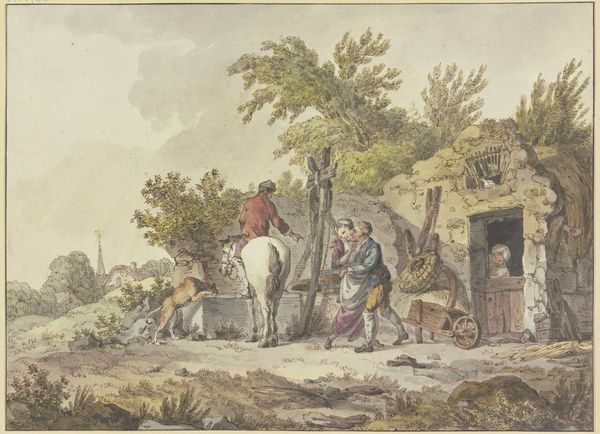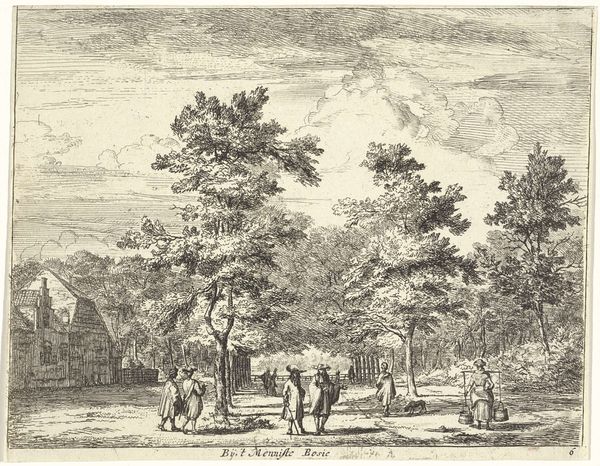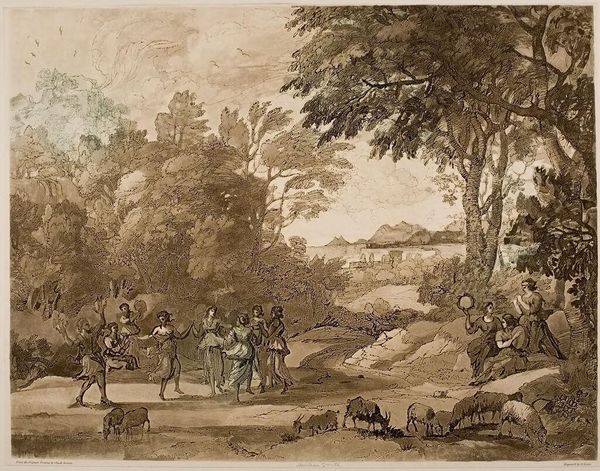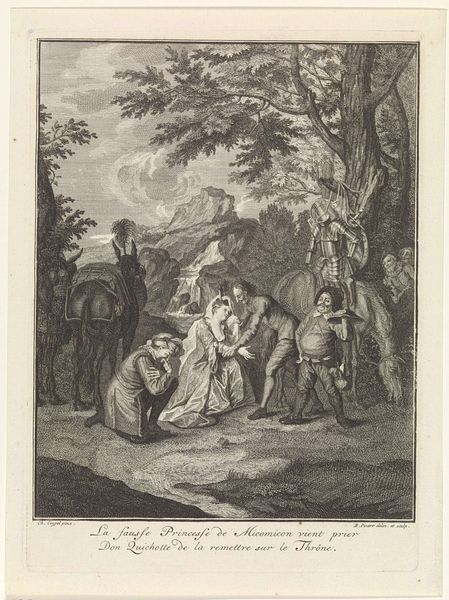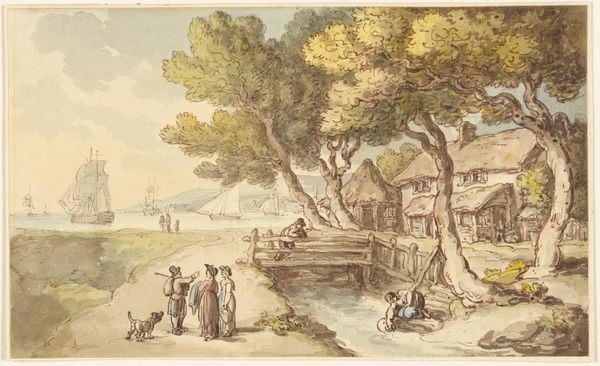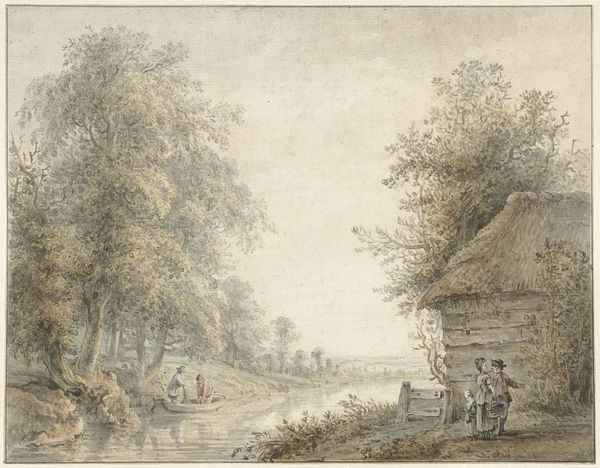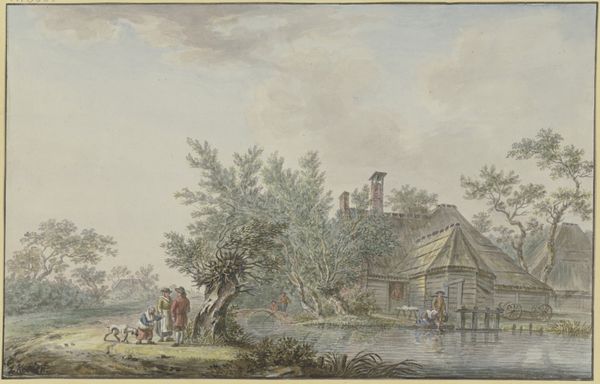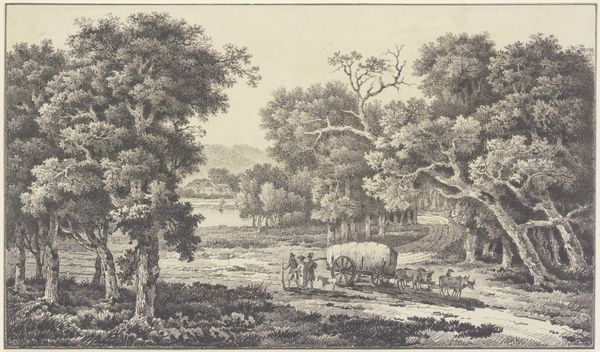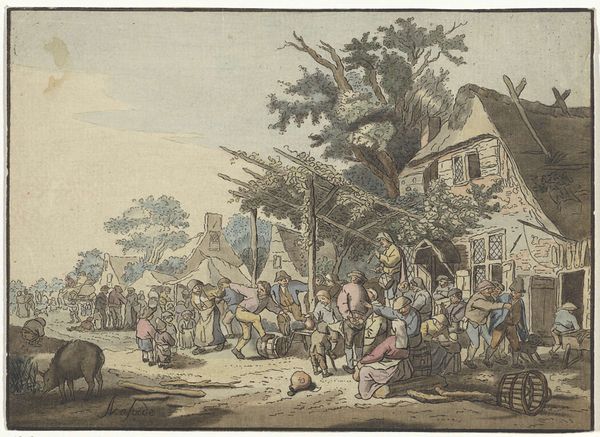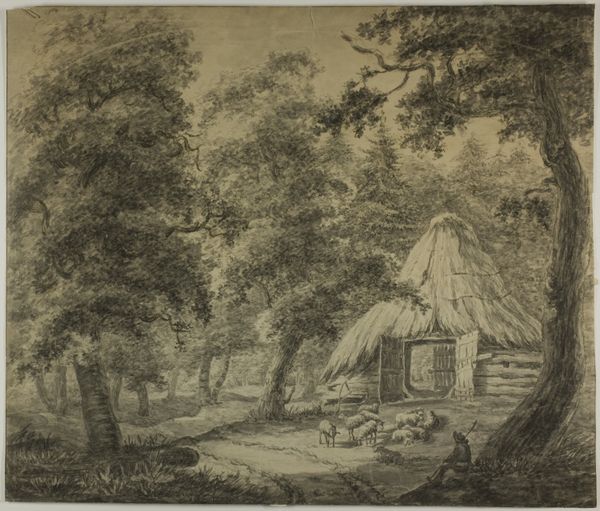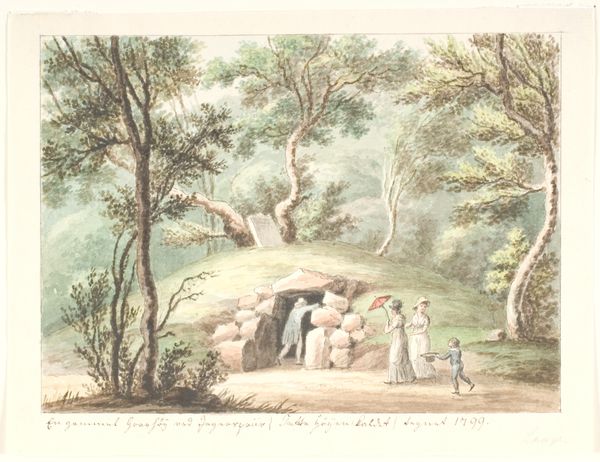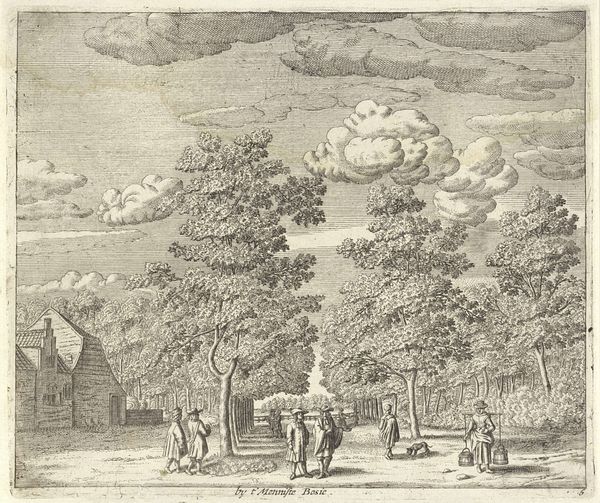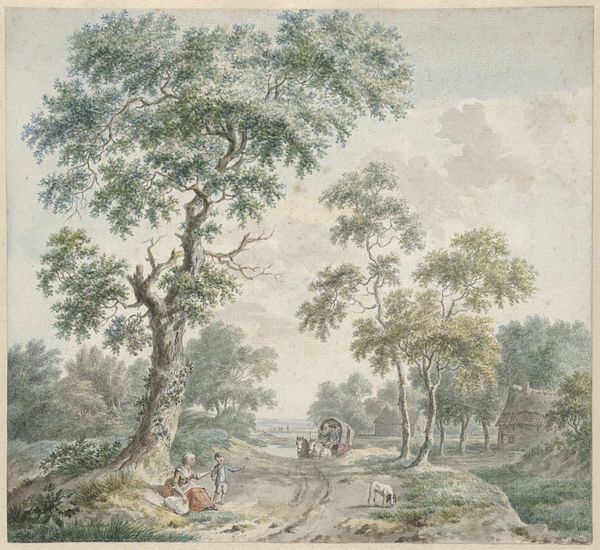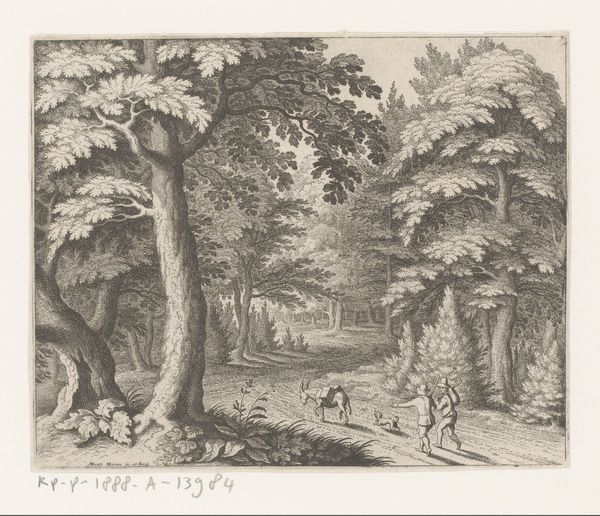
drawing, print, plein-air, paper, watercolor, ink
#
drawing
# print
#
plein-air
#
landscape
#
paper
#
watercolor
#
ink
#
romanticism
#
genre-painting
Dimensions: 285 × 444 mm
Copyright: Public Domain
Curator: Welcome. Before us, we have Thomas Rowlandson's "Dover Coach." It's an undated piece rendered in ink and watercolor, a charming example of plein-air landscape, now residing here at the Art Institute of Chicago. Editor: The scene feels like a fleeting snapshot. Despite the gentle wash of the watercolors, there’s a lively energy—almost as if the horses and coach are about to gallop right off the page. Curator: I agree. The quick, gestural lines give a real sense of immediacy, indicative of its Romantic-era approach to landscape. Notice how the coach itself is quite detailed; its design is intended to visually communicate the status and wealth of its occupants. Also note how it emphasizes that the location where it was produced influenced the making of art by a privileged class. Editor: Right, it's about luxury and speed. And observe how that contrasts with the rest of the scene—the pastoral simplicity of the mother and child, the lounging patrons of the inn. Rowlandson sets up a clear dichotomy: movement versus stasis. Also notice how Rowlandson employs popular themes—the traveler on a journey of adventure. Curator: Absolutely, and looking closer at those figures—the coach passengers seem almost comically crowded. I’d like to examine the paper used. You can see slight variations, like a texture with a hint of cotton. It is as much about everyday life of ordinary subjects depicted through images that have become archetypal symbols, as about artifice and status. The Romantic lens romanticizes them, even those like the inn patrons who are still connected to labour. Editor: I find myself thinking about how we receive this image today, what the memory and emotional associations with that sort of scene have evolved to represent. What was an experience only enjoyed by the wealthy, we may experience with an appreciation to a life simpler, lived in contact with Nature and its beautiful green. Curator: Well, viewing through a Materialist approach and taking a Romantic view simultaneously allows a conversation across eras that are often taken to be contrasting moments. Editor: Exactly. These symbols evolve to have completely different resonance as our collective unconscious matures with the times. It shows the powerful link to the past. Curator: Indeed. I've noticed new connections within its visual construction. Editor: And I, deeper appreciation of its evocative narrative.
Comments
No comments
Be the first to comment and join the conversation on the ultimate creative platform.
